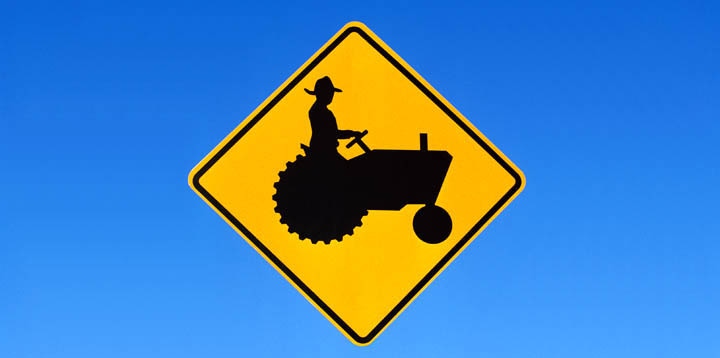February 3, 2011

The rate of childhood injury on farms and ranches has declined by nearly 60 percent since 1998, an encouraging sign that research and public awareness efforts are making an impact in one of the nation’s most hazardous industries.
“This marked decline is a testament to the dedicated efforts of many individuals, organizations and agribusiness sponsors, along with federal agency leadership,” said Barbara Lee, Ph.D., director of the National Children’s Center for Rural and Agricultural Health and Safety, Marshfield, Wis. “Injuries and deaths affecting children on farms are no longer viewed as unavoidable accidents, but rather as predictable and preventable events.”
The rate of injuries fell 59 percent, from 16.6 to 6.8 per 1,000 farms (includes all children who live on, visit, or are hired to work on farms), during the period 1998-2009. Injury rates calculated for just youth who live on farms also showed a significant decline, from 18.8 to 9.9 per 1,000 farms, or 47.3 percent, according to a scientific survey conducted by the USDA National Agricultural Statistics Service for the National Institute for Occupational Safety and Health (NIOSH).
Total number of injuries to youth ages 19-and-under dropped from 37,774 to 15,011, while the number of youth living on farms dropped from 1.46 million to 1.03 million.
Rate of injury is the most meaningful method for judging progress, Lee said, because it takes into account the reduced number of farms and the fewer numbers of children who live on, visit or are hired to work on farms.
Lee attributes the progress to factors including:
• Congressional approval and funding of the National Action Plan for Childhood Agricultural Injury Prevention, facilitated by Congressman David Obey in 1996.
• Leadership and funding provided by NIOSH, the federal agency responsible for conducting research and making recommendations for the prevention of work-related injury and illness. NIOSH is part of the Centers for Disease Control and Prevention.
• High-quality research that provided evidence of strengths and limitations of various interventions and policies. Significant levels of private donations to organizations such as Farm Safety 4 Just Kids and
• Progressive Agriculture Foundation for community-based safety programs.
• “Keep Kids away from Tractors” and other campaigns supported by media coverage.
• National Children’s Center initiatives to establish consensus-driven guidelines, most notably the North American Guidelines for Children’s Agricultural Tasks (NAGCAT) and Creating Safe Play Areas on Farms.
• A willingness of farm owners and parents to bury unsafe traditions and adopt new practices involving children and young workers.
Beneath the overall declining injury rates, however, challenges remain, such as higher relative injury rates for all-terrain-vehicles (ATVs) and horses. An in-depth analysis of 2006 data revealed a mixture of work and non-work exposures, including ATVs and horses, that likely contribute to the higher injury rates seen in farm household children ages 10-15 relative to other age groups. For youth younger than 10, the majority of injuries were nonworking injuries.
“We are fortunate to have new data on childhood agricultural injuries,” Lee said. “This information helps us maintain our momentum and target future interventions on selected areas where injuries persist.”
The data are based on a telephone survey of 50,000 randomly selected farms. Farm operators were asked questions about injuries to youth less than 20 years of age that occurred on their farm during the survey year. An injury was defined as any condition occurring on the farm operation resulting in at least 4 hours of restricted activity.
For general information regarding childhood safety on farms, contact the National Children’s Center, [email protected], or 1-800-662-6900.
For NIOSH-NASS childhood agricultural injury data, check the NIOSH website, www.cdc.gov/niosh/childag.
You May Also Like




